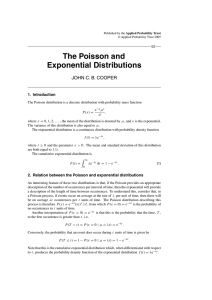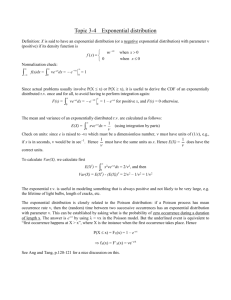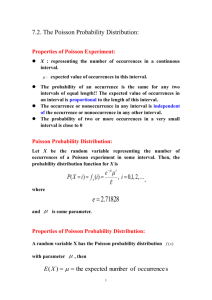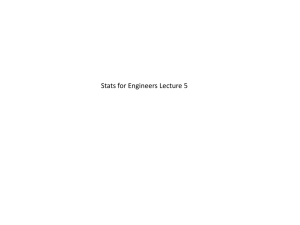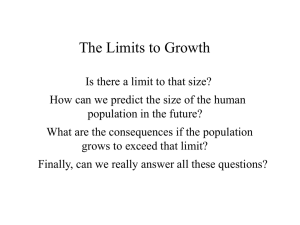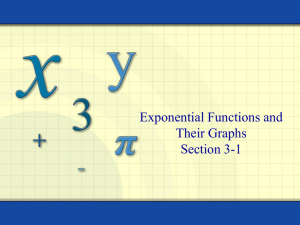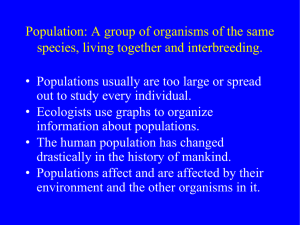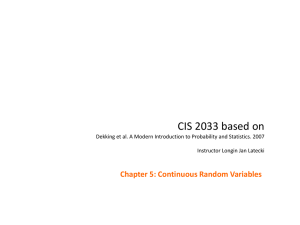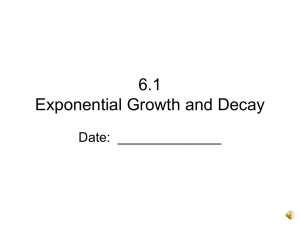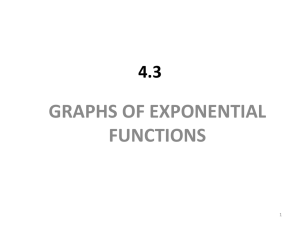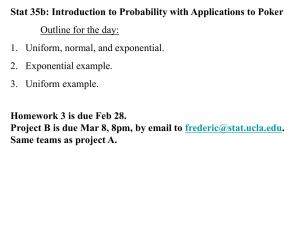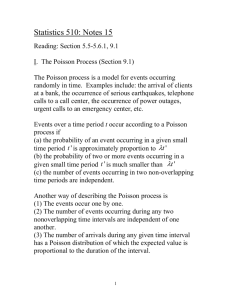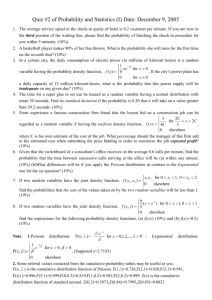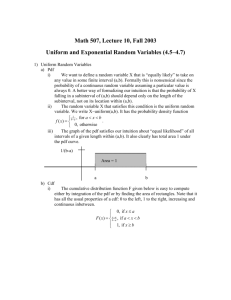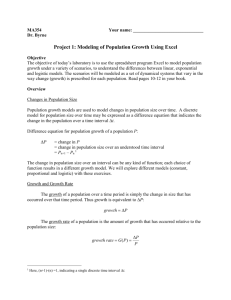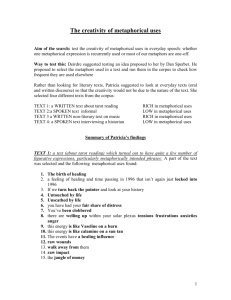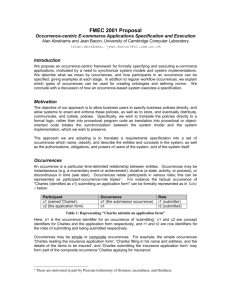(III) The Exponential Density:
advertisement
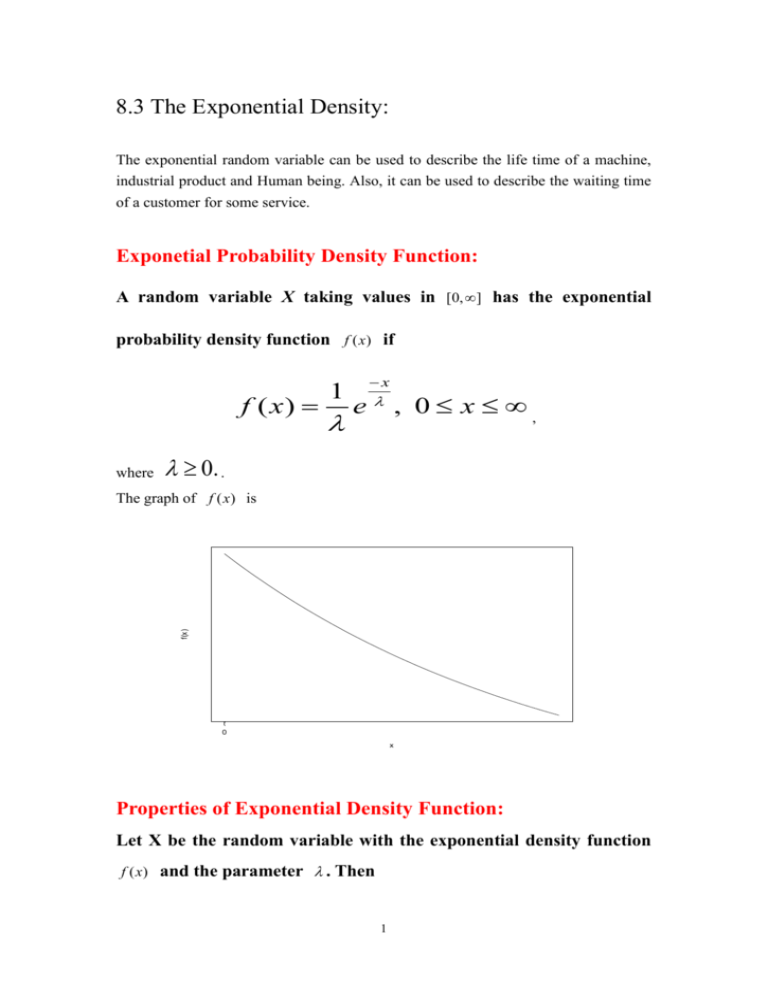
8.3 The Exponential Density: The exponential random variable can be used to describe the life time of a machine, industrial product and Human being. Also, it can be used to describe the waiting time of a customer for some service. Exponetial Probability Density Function: A random variable X taking values in [0, ] has the exponential probability density function f (x) if f ( x) where 1 x e , 0 x , 0. . f(x) The graph of f (x) is 0 x Properties of Exponential Density Function: Let X be the random variable with the exponential density function f (x ) and the parameter . Then 1 1. P( X x0 ) 1 e x0 , x0 0 . for any 2. E( X ) x 0 x 1 e dx and Var ( X ) x 2 0 1 x e dx 2 . [derivation:] x x0 x x0 x 0 1 x P( X x0 ) e dx e d e y dy 0 0 0 e x0 y 0 e x0 e0 1 e x (y ) x0 The derivation of 2 is left as exercise. Note: S ( x0 ) P( X x0 ) 1 P( X x0 ) e x0 is called the survival function. Example: Let X represent the life time of a washing machine. Suppose the average lifetime for this type of washing machine is 15 years. What is the probability that this washing 2 machine can be used for less than 6 years? Also, what is the probability that this washing machine can be used for more than 18 years? [solution:] X has the exponential density function with 15 (years). Then, P( X 6) 1 e 6 15 0.3297 and P( X 18) e 18 15 0.3012 Thus, for this washing machine, it is about 30% chance that it can be used for quite a long time or a short time. Relationship Between Poisson and Exponential Random Variable: Let Y be a Poisson random variable representing the number of occurrences in an time interval of length t with the probability distribution where e u i P(Y i) , i! is the mean number of occurrences in this time interval. Then, if X represent the time of one occurrence, X has the exponential density function with mean E ( X ) 1 (t). The intuition of the above result is as follows. Suppose the time interval is [0,1] (in hour) and 4 . Then, on the average, there are 4 occurrences during 1 hour period. Thus, the mean time for one occurrence is 1 1 (hour). The number of 4 occurrences can be described by a Poisson random variable (discrete) with mean 4 while the time of one occurrence can be described by an exponential random variable (continuous) with mean 1 . 4 3 Example: Suppose the average number of car accidents on the highway in two days is 8. What is the probability of no accident for more than 3 days? [solutions:] The average number of car accidents on the highway in one day is mean time of one occurrence is 8 4 . Thus, the 2 1 (day) . 4 Let Y be the Poisson random variable with mean 4 representing the number of car accidents in one day while X be the exponential random variable with mean 1 (day) 4 representing the time of one accident occurrence. Thus, P(No accident for more than 3 days) P( the time of one occurrence larger tha n 3) P( X 3) e Online Exercise: Exercise 8.3.1 4 3 1 4 e 12 0
